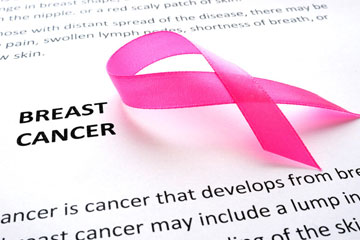Breast cancer is common cancer among women. About one in eight US women are expected to develop invasive breast cancer during her lifetime and approximately 287,850 women are expected to be diagnosed with breast cancer in 2022,according to breatcancer.org. With early detection and effective therapy options, the outlook for breast cancer is very good. Early detection of disease can improve survival rates and the rate of recovery is increasing year by year. Physical and physiological adjustment is essential to manage symptoms and effects of the treatment.
Let’s first look at the risk factors for breast cancer:
- Gender: Being a woman
- Age: Being 50 years old or older
- Family history: Having family members who have had breast, ovarian, tubal, or peritoneal cancer.
- First and last menstruation: Had menstrual periods before age 12 and menopause after 55
- Gene mutations: Carrying certain inherited gene mutations
- Breast tissue: Having thick breast tissue
There are also environmental factors that can increase risk of breast cancer:
- Lifestyle
- Poor diet
- Obese or over weight
- Consuming beverages like alcohol
- Increase use of tobacco
- Undergo radiation therapy on chest region especially under30
- Medication for menopause
- Use of birth control pills
However, more than half of women who develop breast cancer have no recognizable risk factors. Also, having a risk factor does not mean that you will get the disease.
Symptoms
Breast cancer develops in the cells of the breasts. The cancerous cells are the result of mutation taking place in genes that regulates cell growth. The mutation results in the cell division as well as uncontrollable multiplying of cells. The cancerous cells develop either in the lobules or in the ducts of the breast.
Women need to know the symptoms of breast cancer to be able to detect the presence of cancerous cells in the breast. Typical symptoms include:
- A lump on the breast
- Thickening of breast tissue
- Unusual and bloody discharge from the nipple
- Sudden appearance of inverted nipple
- Change in skin color on as well as around the nipple
- Change in breast size and shape
- Redness/pain in breast region
- A lump or swelling under the arm
- A hard spot under the skin
All kinds of lumps may not be cancerous. Non-cancerous breast lumpsor benign lumps are usually caused by cysts and fibroadenomas. Fat necrosis and sclerosing adenosis are other causes of benign lumps in the breast.
Self-examination – How to Check for Lumps
- Stand in front of mirror without wearing bra or top and check with your arms by your side and secondly with your arms above your head.
- Should close examine the shape, size and skin texture of your breast
- Repeat this while taking shower. Soap and water would help you to feel the lumps in your breast more detail.
- Lightly squeeze your breast and check whether and kind of discharge coming out from your breast other than milk.
If you feel the presence of a lump, see your doctor.
Diagnosis
Breast cancer is diagnosed through various procedures and tests:
- Breast exam: The doctor will check the breasts and lymph nodes in the armpit and check for any lumps or other abnormalities.
- Biopsy: A biopsy involves removing a core of tissue from the suspicious area using a specialized need. This is the only conclusive way to diagnose breast cancer.
- Mammogram: An x-ray examination of your breast can detect unusual or abnormal growths.
- Ultrasonography: Images of the tissues inside your breast can identify lumps or other abnormalities.
- Magnetic Resonance Imaging (MRI): this test utilizes magnets and radio waves for locating the lumps.
Stages of Breast Cancer
There are various stages of the disease that show the cancer growth or spread.
Stage 0: In this stage, there is no evidence that the cancerous cells have broken through the milk ducts and affected the fatty tissue that makes up most of breast.
Stage I: In this stage, the cancer cells have spread near to breast tissue.
Stage II: In this early stage, the cancer can be either in the breast or in the nearby lymph nodes or both. This stage shows how extensive the cancer is and how much it has spread. This helps the doctor decide what type of treatment is needed.
Stage III: In this stage, the cancerous cells would have invaded the nearby tissues and lymph nodes, but might not spread to other organs. This stage is also referred to as locally advanced breast cancer.
Stage IV: This is considered the well advanced or final stage of breast cancer. The cancerous cells would have spread to other organs as well. This stage is referred as metastatic breast cancer.
Treatment
Treatment provided would depend on the stage of the cancer and include:
- Breast cancer surgery
- Chemotherapy
- Radiation therapy
- Hormone therapy
- Immuno therapy
- Targeted drug therapy
Being diagnosed with cancer will have physical as well as emotional impacts. Our next blog discusses strategies to cope with the changes.
